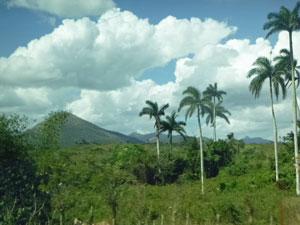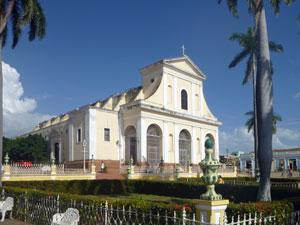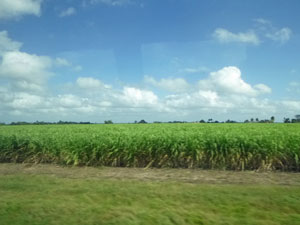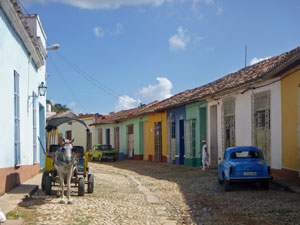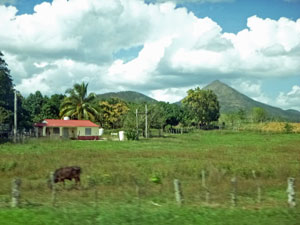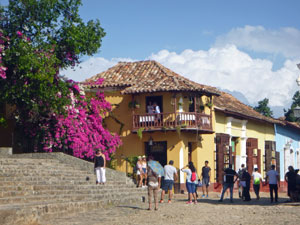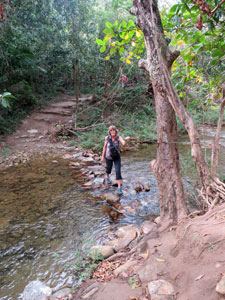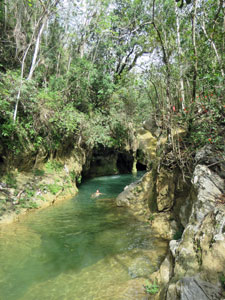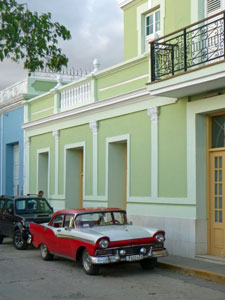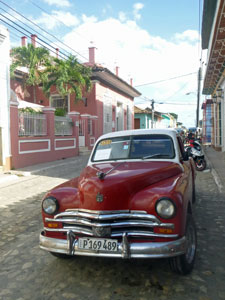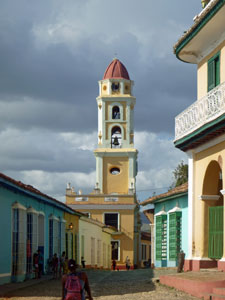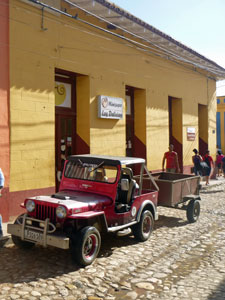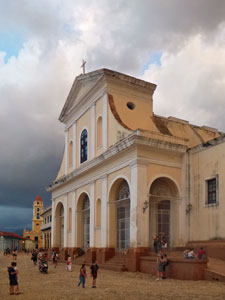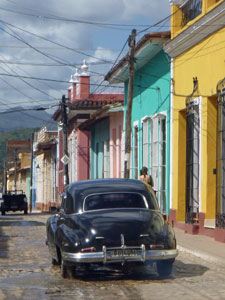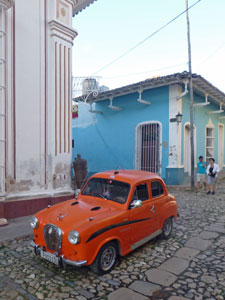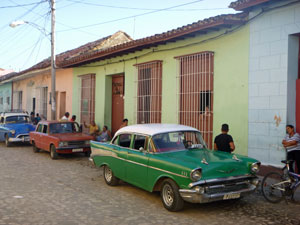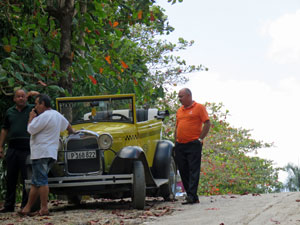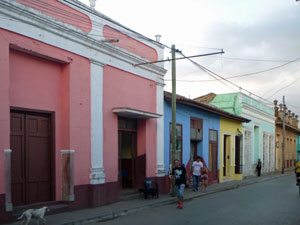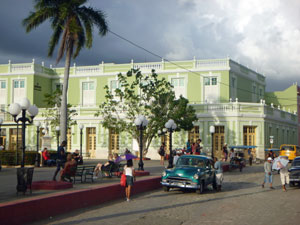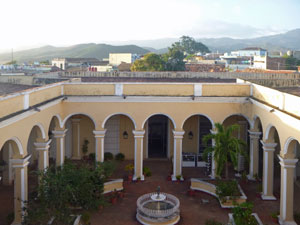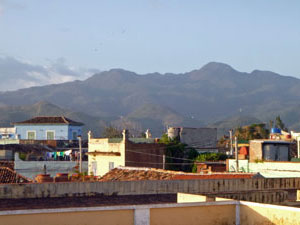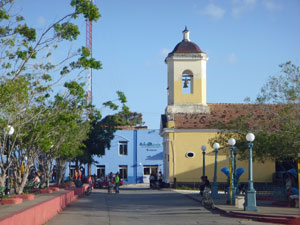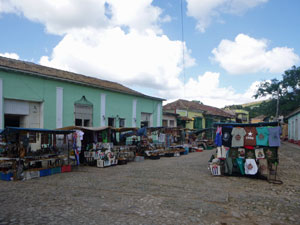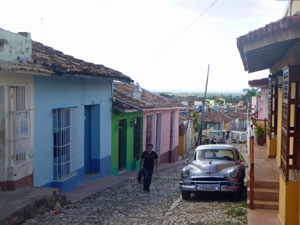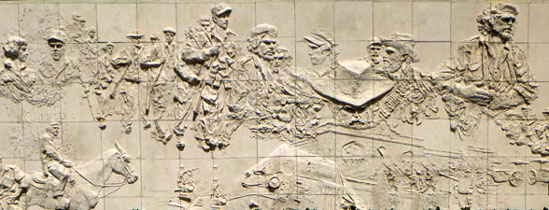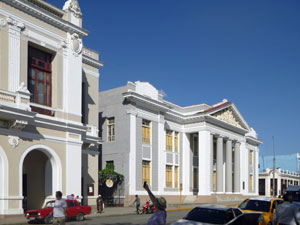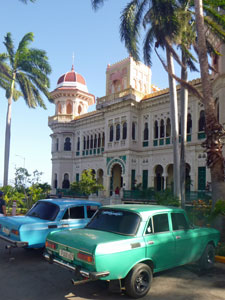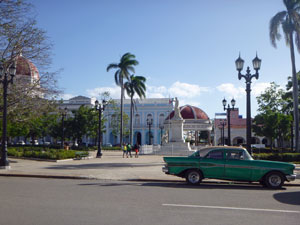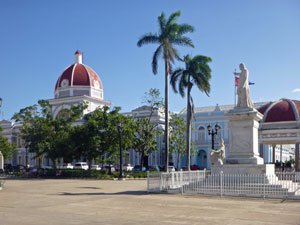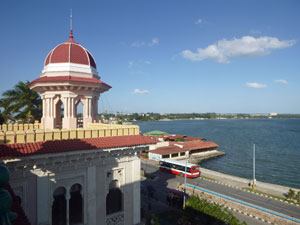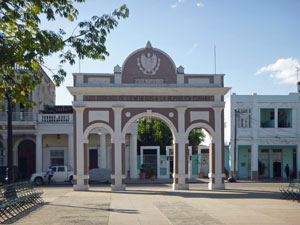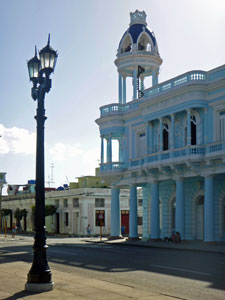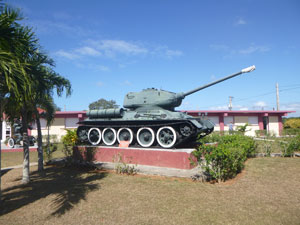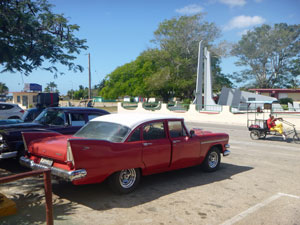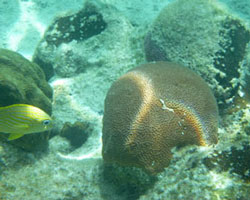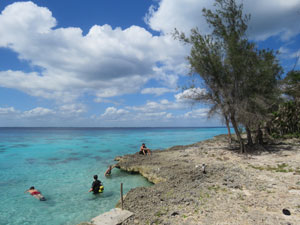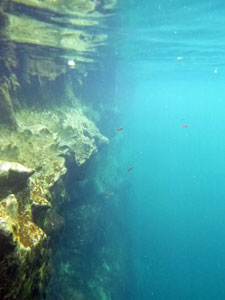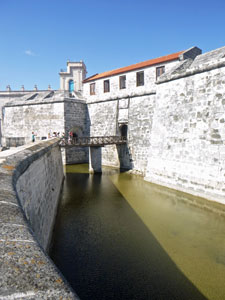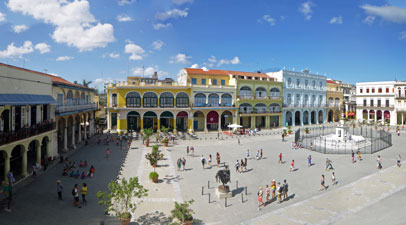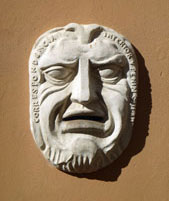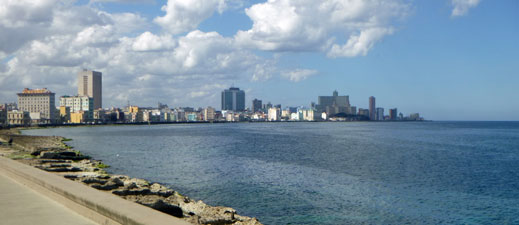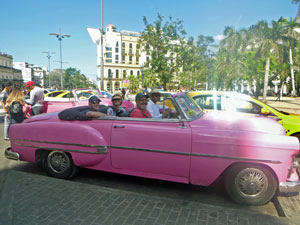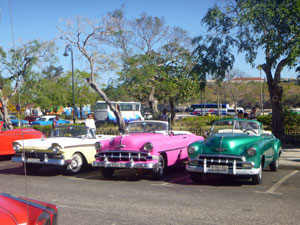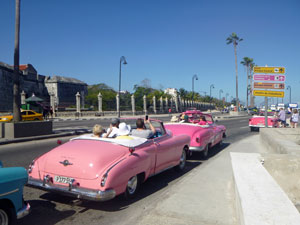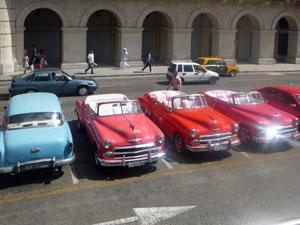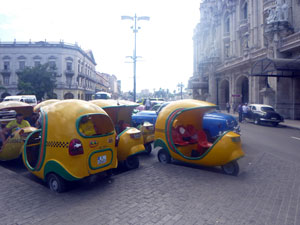| Cuba (part 2) |
Trinidad |
Yet again it was time for a major move by bus – 5-hours from Camagüey to Trinidad, first crossing the flat plains scattered with sugar cane plantations and pastures dotted with fat cattle grazing. Soon, a distant blue haze to the north turned into the foothills of the Sierra Escambray and signalled our arrival at Trinidad. This small city is considered the colonial gem of Cuba and is world-heritage listed – we would be here for three nights to explore its cobbled streets lined with pastel coloured houses and historic old buildings, as well as its mountainous and coastal surrounds. |
||
|
|
|
With the mountains so close, it was time to head out of town to explore the more natural parts of Cuba. For Kevin, Mike, Odile, the fair Nello and myself, our destination was Salto Javira, a waterfall in the foothills of Sierra Escambray. A short bus trip following the river led us to the start of the walk. Crossing the stream on a rickety suspension bridge, the rocky path led us up into a short limestone gorge to reach a higher narrow valley. |
|
|
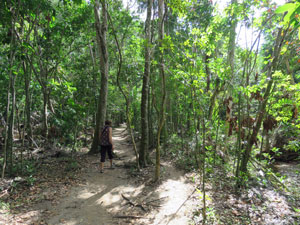 Forest of the Sierra Escambray |
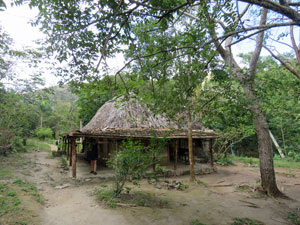 A forest lodge |
|
From here, it was a pleasant stroll beneath the shade of the forest – spotting Cuba's national bird, the colourful tocororo, chirruping in the trees above, was a highlight. |
||
 |
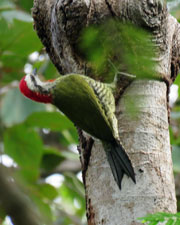 |
|
After twice fording the stream, we reached Salto Javiro and what a beautiful spot it was – a long clear pool of water, leading up between rock walls to the rushing waterfall. To the left of the falls, a dark-shadowed overhang marked the entrance to a cave. It was great to swim up to the falls and then into the cave, where bats hung like pendula from the roof or flitted about in the gloom – a magic spot and just the right cure for an overdose of cities. |
||
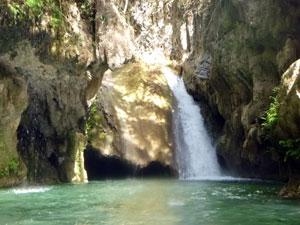 The falls of Salto Javira |
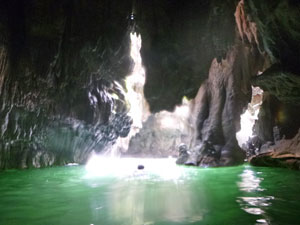 View from inside the cave next to the falls |
|
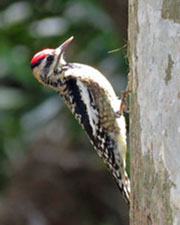 |
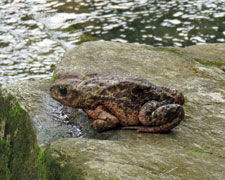 |
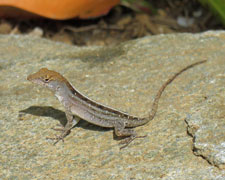 |
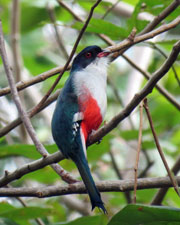 |
When we returned to Trinidad, we were ready again to wander through the cobbled streets, past local market stalls and into streets lined with old colonial houses. After night fell, we headed off to listen to the primitive rhythms of Son music at the Casa de la Cerveza, enjoy an evening meal in a partly-ruined and high-walled old Spanish mansion, and later chat with some locals about life in Cuba at Don Pepe's Coffee House. Thus ended a great day in Trinidad. |
|||
|
|
|
|
|
|
|
We had another full day in Trinidad and opted for the same mix of city and beyond – this time for the beyond, Kevin, Mike, Odile and I took a 1950s Pontiac taxi down to Playa Ancon, the thin strip of pale white sand lining the Caribbean Sea near the city. Unfortunately, poor Nello had come down with a dose of what could loosely be called "Cuban colon". With rest, she will hopefully be fine again tomorrow …. when, yet again, we will take to the bus to slowly wend our way back towards Havana. |
|
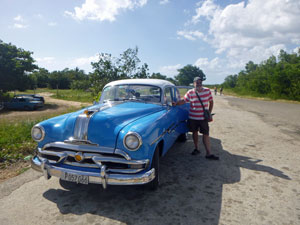 Out taxi to the sea |
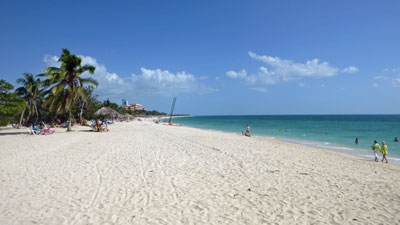 The beach at Playa Ancon |
|
Cienfuegos |
Our destination was Cienfuegos, on the coast, but before going there, we headed inland towards the Valle de los Ingenieros – a broad valley where, once upon a time in the 19th century, 60 sugar mills worked flat out producing sugar from the slave-worked cane-fields. The wealth of Trinidad was built on the misery of slaves and the sugar barons built their mansions throughout the valley. |
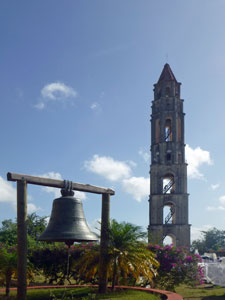 Old slave-watching tower |
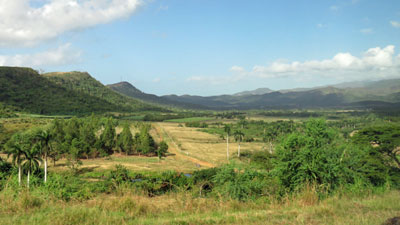 Valle de los Ingenieros |
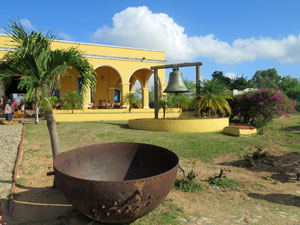 Colonial sugar baron's residence |
Another thing they built was a tower from which to watch the slaves and make sure that they kept working while the owners sipped their rum. One in particular built a 45m tall tower, a folly which along with the mansion is now a tourist attraction – we stopped for a visit. From the top, views spread out across the fields to the mountains of the Sierra Escambray. Where once sugar cane grew, cattle now graze – there is much less profit to be made when you have to pay for labour. I suspect that the cattle are treated better than were the slaves of the 19th century. |
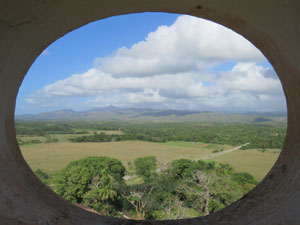 View from the tower window |
Leaving the valley, our bus climbed up into the forest-covered mountains, where we made another brief stop to visit a tiny 11-student primary school in a small rural village. It was interesting to learn from Yaima about the Cuban education system, which, unlike many parts of Central America, reaches everyone and is free through to and including University. |
||
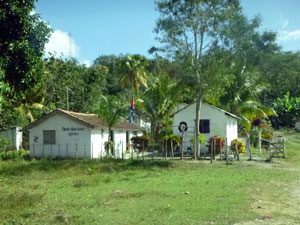 Country school on the road to Santa Clara |
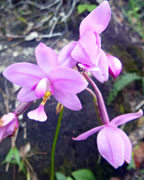 |
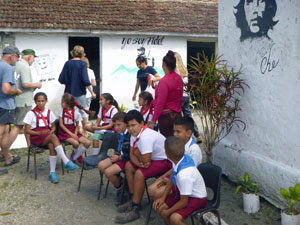 Students meeting gringos |
|
The main reason for our inland detour, however, was to stop at the town of Santa Clara and visit the mausoleum of Che Guevara, a hero to the Cubans and for many around the world an ongoing symbol of revolution against unjust political systems. The mausoleum was contradictory – beneath an enormous statue of Che lay a darkened stone crypt with a rock wall lined with simple embossed faces of Che and the revolutionaries who died with him in Bolivia – no photos, no hats, no talking allowed – the Cubans clearly hold him in great reverence.
|
Finally it was back in the bus and on to Cienfuegos. This small city is modern by Cuban standards, being built in the 1800s by French settlers. Their style shows, with wide streets set out in uniform grids, long boulevards and beautiful French-style buildings and old mansions. We visited some of these around the main plaza, before following the Paseo (the main boulevard) out along the harbour edge to the peninsula where once the rich had their homes. |
||
|
The French colonial style buildings of Cienfuegos
|
|
From the types of shops, Cienfuegos certainly seemed a more upmarket town, but, to our surprise on walking around at night, was a much quieter place than the other vibrant cities we had visited – barely a salsa song to be heard. We did, however, have the pleasure of a long chat with our guesthouse owners in broken Spanish about the old cars of Cuba. The owner, like Kevin, was an old car tragic and himself owned a 1950s Hillman that he had restored. It was hard to prise the two apart. |
|
Havana |
The next day it was finally time to head back to Havana, but with a couple of stops on the way. The bus took us across the flat landscape, a mixture of market gardens, rice fields and dense scrubby vegetation to reach Playa Giron, a place special to Cuban history. It was here, in 1961, that the infamous Bay of Pigs (Bahia de Cochinos) invasion took place – when CIA-backed counter-revolutionaries attempted to re-take Cuba from Castro's government. The invasion was crushed within three days and is a landmark date for Cubans. Here we visited the museum to learn more about the background and actions during that period – enlightening. |
|
|
Some lighter diversion seemed necessary after that, and a stop a little further along the rough limestone shore of the bay provided it. We were at the Cueva de los Pesces, a 70m deep sinkhole in the limestone filled with clear saltwater and a place for a refreshing swim and snorkel above the deep blue depths of the pool. |
||
|
We also extended our snorkelling to the adjacent Caribbean Sea, where some scattered coral outcrops above the sandy bottom attracted a few fish. It was good to get a bit of exercise.
|
|
The last stop was a bit of a surprise. I never realised that Australia had played such a crucial role in battle at the Bay of Pigs – in fact, it provided the command-post for Fidel Castro's troops as they first contained and then defeated the invading forces. But before shock sets in, I am talking about Australia, the small Cuban village, not Australia the country. Still, it was good place to stop for we five Aussies to pose beneath the name of the town. |
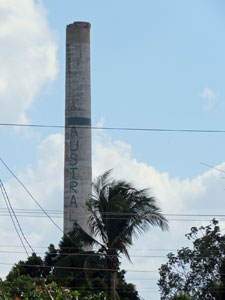 |
|
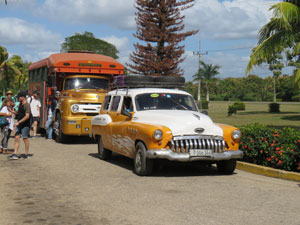 |
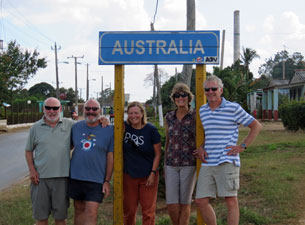 Los Australianos visitandos en Australia |
|
And then it was on to the Cuban capital to check in to our guesthouse in Old Havana town – time to say good bye to Eduardo (aka Barbito), our very pleasant bus-driver for the tour. For the last two days of our Cuban visit, we would be on foot. The next morning it was also time to say goodbye to Yaima, who had showed us her Cuba for the past 14 days – thanks for being such a great guide and friend, Yaima. However, before heading off, she left us in the hands of Susi for a very informative tour of the colonial houses, palaces, churches and plazas of Old Havana, the World Heritage listed part of the city. |
|||
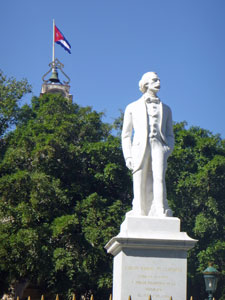 |
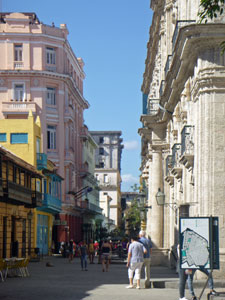 A selection of street scenes ..... |
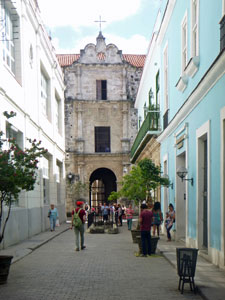 .... from Old Havana |
 |
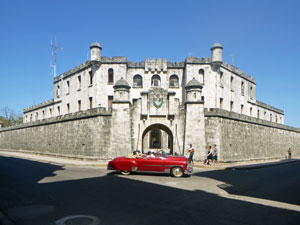 El Castillo |
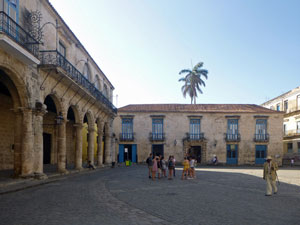 Plaza de la Catedral |
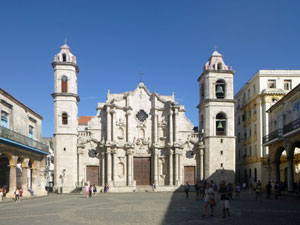 San Cristobal Cathedral |
Walking through plazas lined with beautifully-restored palaces, churches and government buildings, around old Spanish fortresses and down narrow streets with crumbling edifices and washing hanging on balconies, Susi gave us insights into the history of Havana and life in the city today – a great tour. Like many Cubans, she has two jobs, one as a historian in one of the Havana museums and the other as a tour guide. The biggest anomaly of socialist Cuba is that, while health, education and social services are free and very good, wages are very low, even for professionals (think 20-40 USD per month) - working in tourism is the one way Cubans can pick up some good money, and many in the industry have university qualifications in other fields, e.g. Yaima was an English teacher and Eduardo, our bus driver, was an engineer. |
||
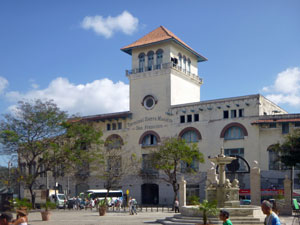 The main port building |
 Streets of Havana Vieja |
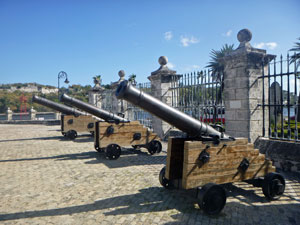 A line of old Spanish cannons |
|
The fair Nello and I then had a bite of lunch near the harbour, watching the old 1950s cars cruising down the road in their pink, electric blue, green, purple and every-coloured paintwork. Culture and history needs met, it was time to for a final taste of Cuban music. This evening we headed off to the famous Buenavista Social Club. |
|
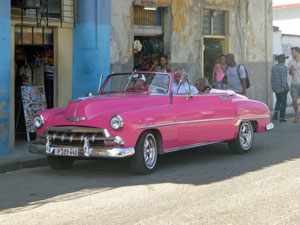 |
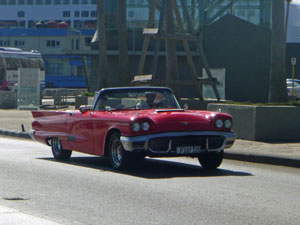 |
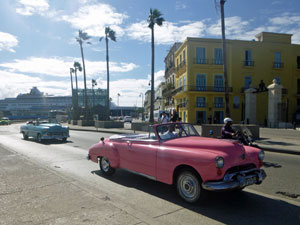 |
|
It took me a while to work out why I didn't really enjoy the Buenavista Social Club. It wasn't that only one of the original musicians was left (still singing at 96) as you can't expect a bunch of 70- and 80-year-olds to keep going forever. The music was still the authentic 1950s Cuban fusion of jazz and Latin rhythms and the venue (the top level in of a huge beautifully-restored colonial palace where large pillars supported the roof around an open courtyard) was impressive. The problem was us, the audience - several hundred people comprised almost totally of "gringos" from tours and visiting cruise ships, who largely just sat and listened and, with few exceptions, did not show the spontaneity and joi-de-vivre that an audience of Cubans would have. I missed that. Rightly or wrongly, I suspect that the Buenavista Social Club has become a victim of its own fame. |
|
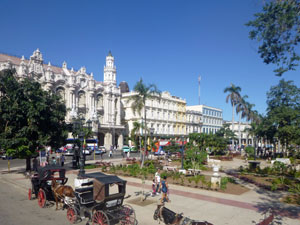 El Parque Central |
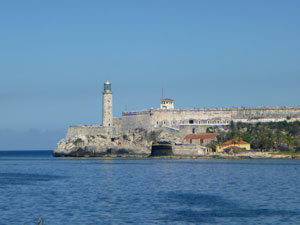 Old fortress guarding Havana Bay |
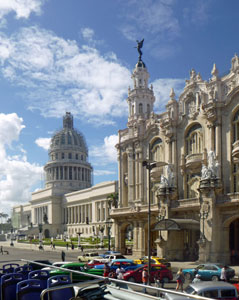 El Capitolio and El Grand Teatro
|
Our last day in Havana dawned blue and clear, as had most of our time here. Our group had shrunk, due to departures, and post-tour lethargy had set in, so Mike, Odile, Kevin, Angelo, the fair Nello and I decided to see the rest of Havana on the hop-on hop-off bus. Old Havana is considered the soul of the city, but it has a big body and the open-topped bus took us around the buildings, monuments and suburban houses of Havana Centro and Vedado, the newer and more upmarket parts. It gave us a good appreciation of how spread out the city is.
|
||
Cuba is famous for its old cars – a time warp caused by the US embargo on trade that persists to this day. Being a resourceful lot, the Cubans have kept most of the aging car fleet going and turned them into works of art. We had admired them in the other cities, but there is no doubt that the heritage car culture has reached its zenith here in Havana. Thousands of 1950s Chevs, Fords, Dodges, Pontiacs etc, many convertible (the Cubans improvise well with an oxy-torch) and all sporting bright pastel paintwork, cruise around, loaded with tourists at 50 CUC an hour. It is a good living for the taxistas and is really a must-do thing. We didn't want to revisit places we had been on the bus, so Kevin, Nello and I negotiated a 15 CUC cruise around the neighbourhood in a bright pink, 2-door 1953 Pontiac convertible (i.e. the top had been cut off with an oxy torch – as I said, the locals are resourceful). It was the perfect way to finish our Cuban adventure. |
|
|
 |
 |
|
|
|
|
|

